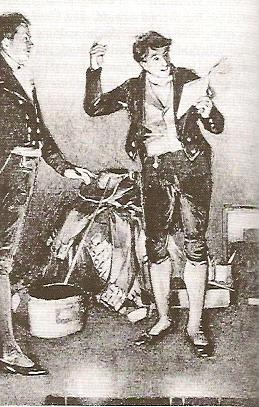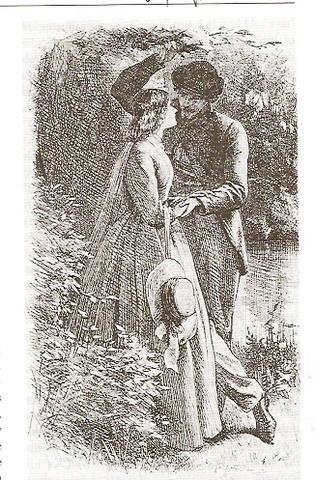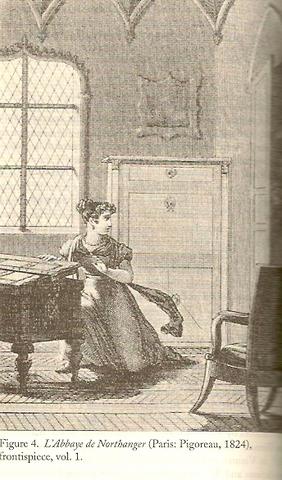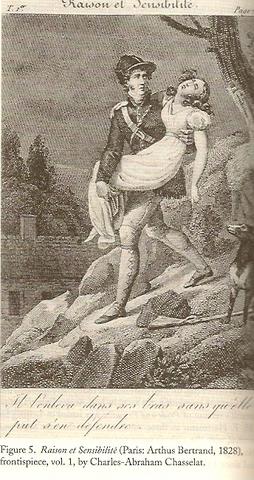

The following review was just published in The Eighteenth-Century Intelligencer: The Newsletter of the EC/ASECS, N. S. 22:2 (2008), 43-46.
Baker, William. Critical Companion to Jane Austen: A Literary Reference to Her Life and Work. NewYork: Facts on File, Infobase Publishing, 2008. Pp. 644. ISBN 13: 978-0-8160-6416-8. $75.00.

In reviewing William Baker's Critical Companion to Jane Austen, I've discovered the seeker of information about Austen faces a proliferating array of companions, handbooks, encyclopedias, dictionaries, guides, to say nothing of websites and blogs. Most nowadays are aimed at a specific audiences within the highly diverse body of Austen's readers: new and continuing, young and old, teachers, scholars, writers, and we should not forget people seeking to make films, to stage plays, and to organize conferences and tours. The niche Baker's volume belongs to is the one David M. Shapard aims at in his excellent The Annotated Pride and Prejudice, one coterminous with that of high school and college teachers when they turn Modern Language Association "Approaches to Teaching" volumes (which Baker cites) to teach new, young and serious readers.
Baker's double-columned page book is divided into four parts. The first part is a nineteen-page retelling of Jane Austen's life. The second part (near three-quarters of the book) consists of detailed close readings of Austen's writings, done in such a way as to teach the reader at the same time how to close read; each close reading is prefaced by a retelling of the present consensus on the composition and publication of the particular text and a plot synopsis; the close reading then followed by a review of what major critics and critical schools have written about the text, a bibliography and a dictionary of characters (which entries are sometimes further interpretative essays). Part III is a hundred page dictionary that consists of compendious entries about people, places, books, and authors connected to or said to have influenced Austen; literary terms, pre-20th century critics, critical controversies, and historical events; and modern topics of interest (e.g., "libraries" and "the slave trade"). Quite a number read like small lucid essays; when appropriate these are followed by bibliography. The fourth part ("Appendixes") consists of a twelve-page chronology of Austen's life and work (basically Deirdre Le Faye's deductions), a five-page general bibliography and a twelve-page index (in five-columned pages), that goes well beyond providing cross-references for names.
Those who've read Baker's scholarship (on George Eliot and the Victorian period, but also modern figures like Alexander Baron, novelist and screenplay writer of the first half of the twentieth century), will not be surprized that Baker's Critical Companion does the work of an excellent knowledgeable college teacher. When compared with other earlier companions intended to offer biographical and literary history and assessment, his book is also a bellwether of trends in scholarship. For example, an intelligent, clearly-written and well-informed book written thirty-five years ago to appeal to same niche of general, serious and new readers, F. B. Pinion's A Jane Austen Companion: A critical survey and reference book (Macmillan, 1973), opens with the equivalent of a biography: a "life" and "background." Compared to Baker's though, Pinion de-emphasizes the romances Baker supposes Austen to have experienced and tells little of Austen's commercial transactions as an author, but rather provides an array of elegant picturesque photographs of houses then standing in relatively unchanged states in order to convey something of Austen's experience of life. Baker has been influenced throughout by an awareness of a strongly female audience and the many biographies, has literally more knowledge (he is indebted to Jan Fergus's work) at the same time as he assumes less knowledge on the part of his readership (he has an entry for "The Bible and Book of Common Prayer"). In lieu of Pinion's choice of staid but accurate (not glamorized) depictions of old-fashioned houses, countryside and scenes, Baker provides earlier illustrations to Austen's novels. Previous scholarly handbooks, such as the now venerable The Jane Austen Handbook, edited by J. David Grey (Athlone Press, 1986), give book history and illustration only the briefest treatment; translation (the global Jane Austen) does not come up as a topic in Grey's collection or in equally-respected The Cambridge Companion to Jane Austen, edd. Edward Copeland and Juliet McMaster (1997). The most recent scholarly companion, Janet Todd's collection of essays, Jane Austen in Context (Cambridge University, 2005) has long, thorough essays on the history of Austen's books' illustrations and translations; so too a recent book of essays, Re-Drawing Austen: Picturesque Travels in Austenland, edd. Beatrice Battaglia and Diego Saglia (Naples, 2004); and book and film history are central to the choices and content of the essays in A Companion to Jane Austen Studies, edd. Laura Cooner Lambdin and Robert Thomas Lambdin (Greenwood Press, 2000), which also emphasizes the role of public reception. Baker's choices for pictures, his discussion of publication histories, and choice of critics shows the influence of all these new perspectives and his strong Victorian background. In his reviews of recent critical commentary, he consistently discusses feminist, post-colonial and various recent eclectic perspectives. He has a long entry and bibliography for "Films, Television, Radio, and Video Adaptations" and "Janeites" and describes the Republic of Pemberley.
There are a few problems in the volume. If reprinted, it needs much more rigorous copyediting than it has had. I found numerous small errors, particularly in the close reading sections. A young reader will probably not be misled by these, but might be confused; omissions of lines, reverse references, and typos should be corrected if the book goes into a second edition. There should be some acknowledgement that biographical materials are scarce, polarised accounts of Austen's life and character common, and a very different picture of her life's events could be told. There should be a separate entry for James Austen-Leigh, his 1870 A Memoir of Jane Austen, the history of the biography, and the controversial nature of the portrait of Austen that is on the cover and third page of Baker's book. Similarly, although every effort is made to keep the close readings impartial and although alternative views are considered, there should be some acknowledgement that Baker's interpretations are those of a specific individual who is an older male scholar and no more universal than say the feminist and other perspectives he places after his readings. He often de-emphasizes literary allusion or intertextuality (for example, the close reading of Northanger Abbey does not discuss gothic much) and tends to take a very middle of the road point of view, preferring (usefully) to bring out aesthetic structure, and much in the manner of, say Barbara Hardy (in A Reading of Jane Austen, 1979) to look at the characters from an assumed universal human and ethical standpoint. This might appeal to the common reader, but it might not. For example, there should be some discussion of why a masterpiece like Mansfield Park has caused such dissatisfaction, and the heroine and hero have been bitterly complained about since the mid-20th century and often by young readers.
As someone who has taught Jane Austen, I would recommend this volume for library purchase in high schools and colleges. The individual essay-like entries (on for example, Shakespeare in Austen, money and trade) are sensible and perceptive in salutary ways for graduate students. There is no condescension towards any group of readers (a common problem in secondary materials on Austen nowadays). As a long-time, older reader of Austen and eighteenth-century scholar, I found myself learning new and useful information and insights. I found evidence I didn't know before which points to when Austen most recently revised a book. For all readers the slow-moving chapter-by-chapter, sometimes paragraph-by-paragraph close readings in lucid English with changes in language and assumptions taken into account will be central to the volume's strength. It's sometimes said that close reading and respect for factual information have gone out of fashion; well, not in this literary companion.
Ellen Moody
George Mason University


1 It's revealing how often the older illustrations present Austen's characters with the same kind of distortion we find in the recent Austen movies. This illustration anticipates the youthful and very handsome romantic scene between Jeremy Northam and Gweneth Paltrow in the 1995 Miramax Emma written and directed by Douglas McGrath.
2 Similarly, very early on, scenes that have become iconic in illustrations and recent movies (that must be there, whether the movie be faithful, a commentary or free adaptation) are anticipated by the earliest illustrations, even in the translated texts. All four illustrations are not taken from Baker's book, but from my own culled collection from various sources.